Qualitative Data Analysis with NVivo
Student Resources
Windows
On this part of the website, you have free access to up to date click-by-click instructions for NVivo on Windows. Simply click on the headings below to reveal the instructions.
Use the index of click-by-click instructions as a companion guide to help you find the instructions you need, or browse through the instructions below that accompany this chapter.
5.a. Create a new Case Classification
- Ribbon: Create > Case Classification.
- Name the Classification > OK.
- We suggest you do not choose to use one of the predefined Classifications because they have predefined Attributes and Values that are unlikely to match your study.
Your new Case Classification will be listed in the List View (as in Figure 5.4) as well as in the Navigation View in the Case Classifications folder.
5.b. Create Cases from imported Files, combining multiple Files into a single Case and classifying the Cases
Create Cases from imported Files (one File per Case)
- Navigation View: Data > Files > Select the Folder with your Files.
- List View: Select Files > Right-click > Create As > Create As Cases > Select the location for these Cases > OK.
Combining multiple Files into a single Case
- Navigation View: Data > Files > Select the Folder with your Files.
- List View: Use Shift + click or Ctrl + Click to select all the Files relating to a single Case from that Folder > Right-click.
- Create As Code > Cases > OK > Name the New Case > OK.
If the Case already exists:
- Select the existing Case and the new data will be added to it > OK.
- All selected Files will be assigned to that Case (Figure 5.6).
- If the Files are in different Folders (e.g., because they contain data of different types), you will need to code the Files from each Folder in separate steps.
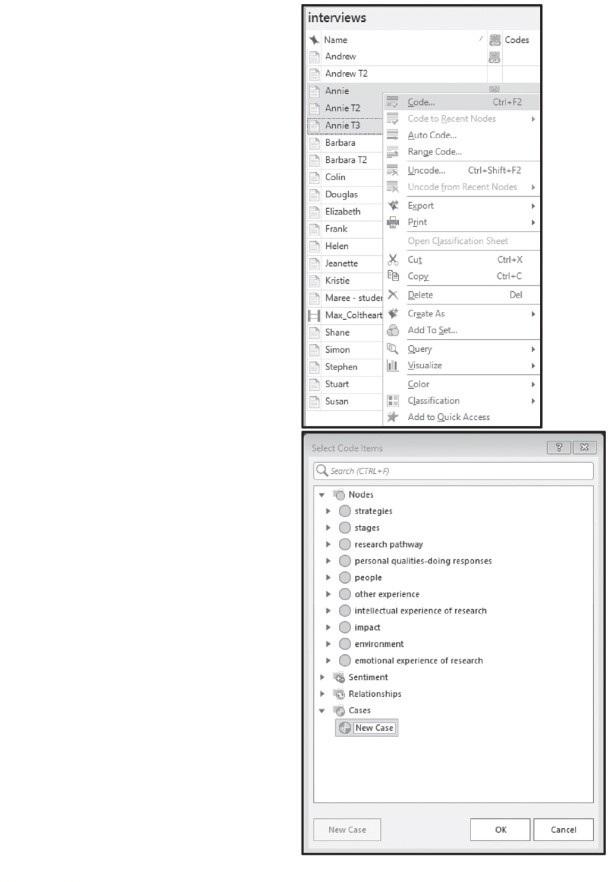
Figure 5.6 Coding multiple Files to a New Case (Windows)
If several Cases have already been created from each separate File (or an additional Case through Auto Coding from part of a shared File) when just one is what is wanted, then use Cut and Merge (Chapter 3) to combine the duplicated Cases into a single Case holding all of the relevant data.
Making Cases from sections of a File
Using participant names above or at the beginning of a paragraph
- Navigation View: Data > Files > Select the Folder with your Files.
- List View: Select the File or Files with multiple (uniquely named) Cases within them > Right-click > Auto Code.
- The Auto Code Wizard will open > Speaker name (Figure 5.7) > Next > Enter each speaker name, followed by Enter (Figure 5.8) > Next > identify a Classification (Figure 5.9) > Finish.
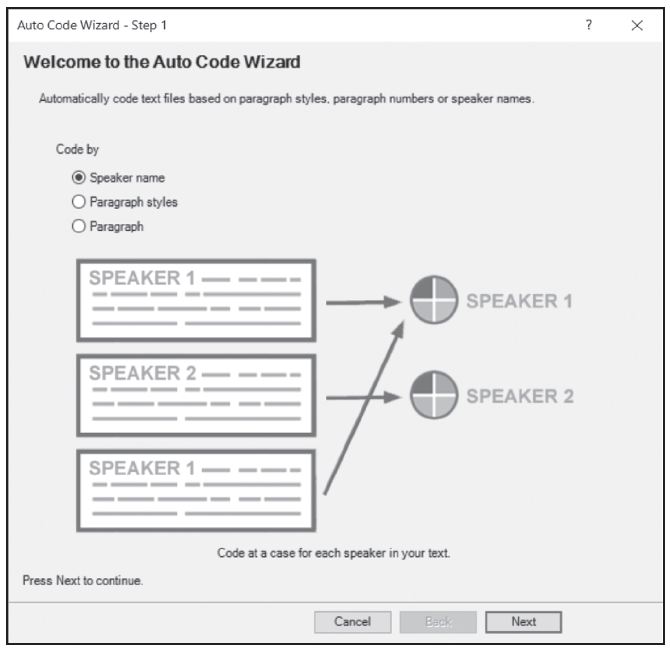
Figure 5.7 Selecting a method for Auto Coding (Windows)
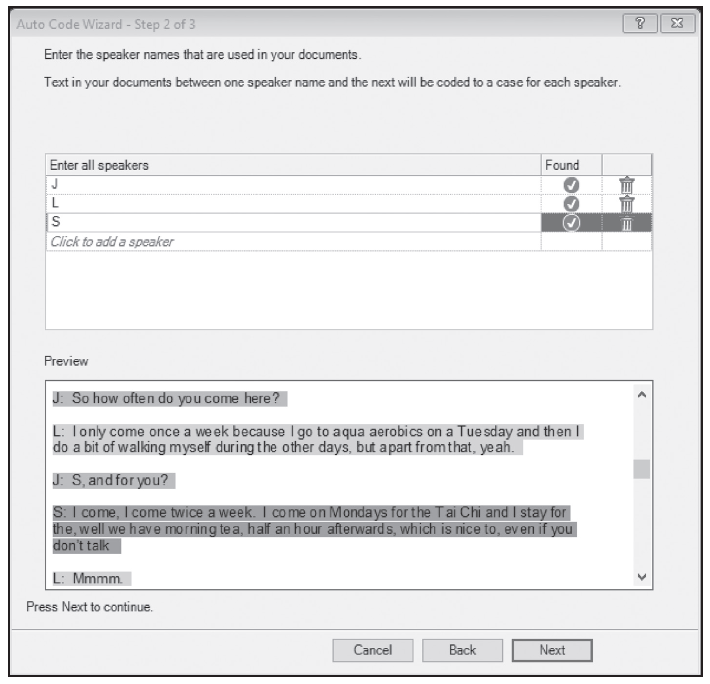
Figure 5.8 Entering speaker names in Step 2 of the Auto Code Wizard (Windows)
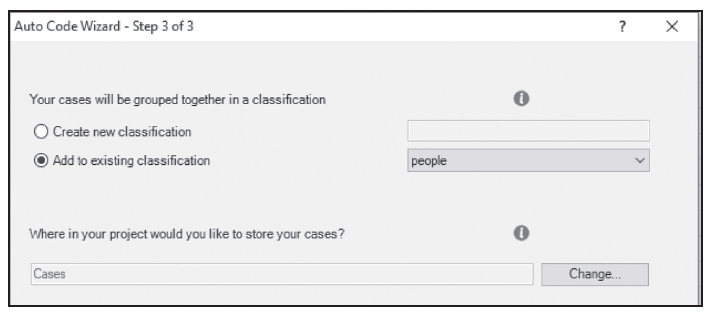
Figure 5.9 Identifying the Case Type (Classification) and location for the new Cases in Step 3 of the Auto Code Wizard (Windows)
Classifying the Cases
At several points along the way during these steps, you were either forced to add a Classification to the Case, or you had the option to do so. In either event, you can check that it worked, or assign the Classification.
- Navigation View: Cases > Cases.
- List View: Select a Case > Right-click > Classification > your Classification should be checked, or you can assign the Classification here by Selecting the correct option.
- Use your Shift key to select all of the Cases if you want to assign them to the same Classification.
5.c. Create Attributes and add Values, step by step
Create Attributes with Values
- Navigation View: Cases > Case Classifications > Right-click on the Classification you created earlier > New Attribute.
The New Attribute dialogue box will open (Figure 5.11)
- Provide a short Name for the new Attribute. Add a Description if needed for clarity.
- Select a data Type for the Values of the Attribute.
- Most Attribute Values will be Text, as that includes any combination of letters and numbers, or ranges of numbers, such as 20–29, 30–39. If the Attribute comprises numeric values only, then choose Integer (whole numbers) or Decimal to ensure that they can be correctly sorted. Date values can be entered in local format with day, month, and year, so if you want to record years only, then use Integer. A Boolean attribute can assume two values only (e.g., Yes, No; True, False). If you are uncertain which type to select, choose Text because this type will accommodate any alphanumeric combination.
- Select the tab for Values at the top of the dialogue.
- You will see two Values already listed: these are assumed to be valid options for any Attribute and they cannot be removed. The default Value is set at Unassigned, and in general you should leave this as the default.
- Use the Add / + button on the bottom left to create new rows so you can type in the Values you need for this Attribute. When you are finished, click on OK. Further Values can be added later, if necessary.
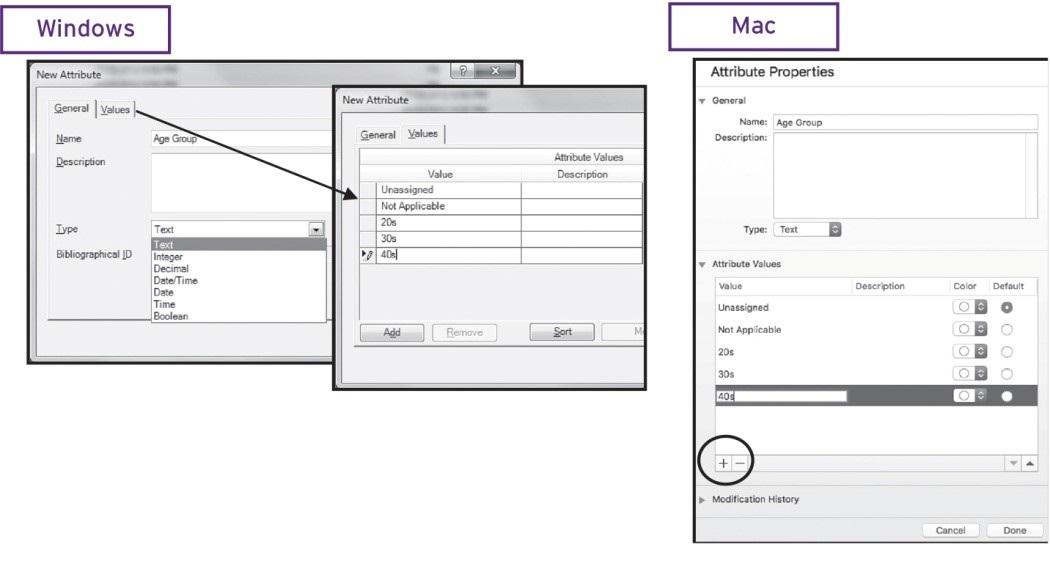
Figure 5.11 Adding an Attribute and Values in Windows (left) and Mac (right)
Add Values to the Cases
- Navigation View: Cases > Case Classifications > [your Classification] > Right-click > Open Classification Sheet.
- The Classification Sheet (Figure 5.12) will open in Detail View, with your Cases in the rows, and the Attributes you have created as the columns. Currently all the Values will be listed as Unassigned.
- Detail View: Click in a cell of the Classification table and select an appropriate Value from the drop-down list for that cell. If the Value you want does not exist, double-click in the cell and overtype Unassigned with your new Value, followed by Enter. The new Value will be added to your list and made available for other Cases with the same Classification.
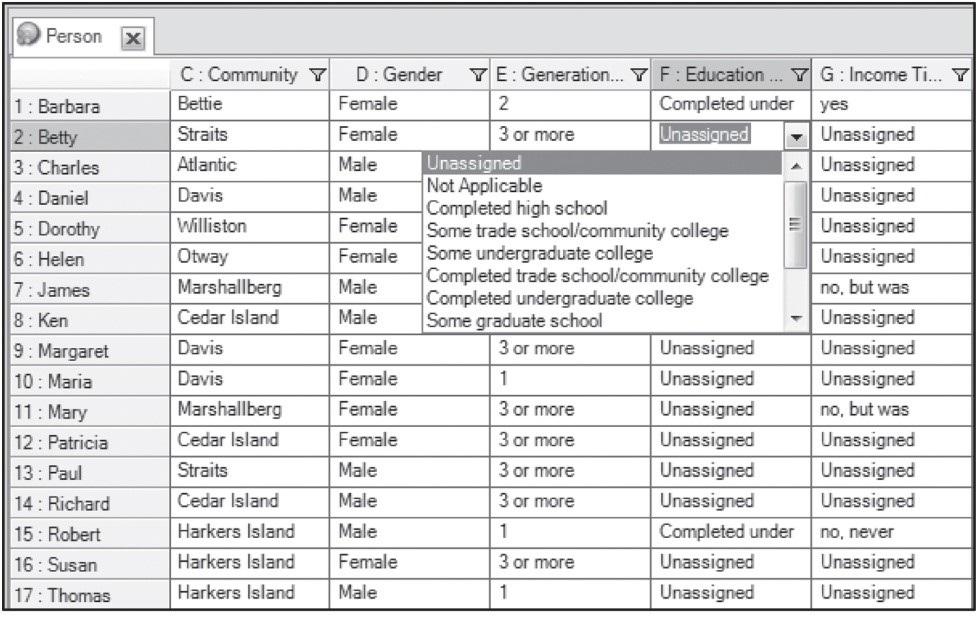
Figure 5.12 Classification Sheet with Attribute Values for interview participants (Windows)
When you are done, check one or two of your Cases to see that the Values are added:
- Navigation View: Cases > Case Classifications > Select [your Classification].
- List View > Click the + (plus symbol) next to a Case to show the list of Attribute Values.
5.d. Importing Attribute Values for Cases from Excel, SPSS, txt or csv
- Ribbon: Import: SPSS or Classification Sheet.
- Import wizard: Step 1: Use Browse to find the Excel or SPSS file > Open > Next.
- Import wizard: Step 2: Check you are importing Case Classification data.
- Tick all three boxes:
- Create new attributes if they do not exist. This tells NVivo that you want to create the attributes listed in the first row of your table.
- Update the classification of existing items. This will connect the Cases listed in the table with the Classification identified.
- Replace Attribute Values of existing files or cases. If you are adding to or correcting any existing Attribute Values, even if all Values are Unassigned, this is required to overwrite the existing cells. Checking this box will never remove entire Attributes from the system: it simply changes Values in existing cells to match those in the table.
- Import wizard: Step 2 for SPSS > Classification > Choose to Create new classification or Import into existing classification > Next.
- Import wizard: Step 3:
- Excel: Choose between the first two radio buttons to match the case name structure in your Classification Sheet (As names or As hierarchical names) – usually As names (e.g., Barbara). If you have created hierarchical lists or subfolders under Cases and you choose As names, then you also need to use the Select button to indicate the exact location of these names, e.g., Cases > People. If you choose As hierarchical names, the full path for each Case will need to be specified in the table you are importing (e.g., Cases\\People\\Interview Participants\Barbara).
- SPSS: Identify (a) the location for the Cases in your NVivo project and (b) the variable name for the column that records the Case names in SPSS.
- tab-delimited text: The full path for each Case will need to be specified in the table you are importing (e.g., Cases\\People\\Interview Participants\Barbara). Providing you have classified the cases and created at least one Attribute (no Values), you can obtain a ready-made table with the Case paths by right-clicking on the Classification to Export.
- Import wizard: Step 3: Uncheck Create new cases if they do not exist unless you are deliberately trying to create cases that don’t already exist in the Project. The danger of leaving this option checked is that you will accidentally create ‘empty’ Cases you do not want, especially if you are importing classification data from a larger statistical file > Next.
- Import wizard: Step 4:
- Excel: Change the default options for dates, times, and decimal symbols, if necessary, to match your data > Finish.
- SPSS: Check Create attribute values using value labels > Finish.
-
Review your classification data
- Navigation View: Cases > Case Classifications.
- Double-click [your Classification name].
- A table set out like your spreadsheet will open in Detail View, allowing you to quickly check if your data have imported as you expected.
- Check for any rows (Cases) in your Classification Sheet where all Values are Unassigned. Is this because they were not entered in your Excel spreadsheet, or because you did not write the name exactly as it is in NVivo, and so the Values for that Case did not import? If the latter, correct the error in the table, and reimport.
- If you make corrections inside NVivo (e.g., on reading the transcript for a Case), be sure to make the same correction in your Excel or SPSS data file in case you have need to import it again.
5.e. Case Classification Summary Report
- Navigation View: Output > Reports > Case Classification Summary Report > Double-click to open.
- Filter Options: Check each to reveal what options are offered and Select (a) which Classification, (b) which Cases, and (c) which Attributes you want the report to cover > OK.
- Ribbon: Report > Optionally uncheck Thumbnails and Report Map if the additional space is needed to see the main (middle) panel with the report.
- Detail View: Right-click on the main panel to Print or Export Report Results.
5.f. Running a Crosstab Query with Attributes
- Ribbon: Explore > Crosstab. The Crosstab Query panel will open in the Detail View (Figure 5.13).

Figure 5.13 Crosstab Query interface (Windows)
- Detail View: Crosstab Criteria > Crosstab codes against > Attributes (the default).
- Add Nodes (or other Codes) to the rows of the Crosstab in one of two ways:
- Navigation View: Codes > Nodes > Select [your Nodes] and then drag from the List View to the Codes box in the Crosstab Criteria dialogue; or
- Detail View: Crosstab Criteria > Click the È (plus symbol) at the bottom left of the Codes panel > Select Project Items (Nodes will be selected already, as a default).
- Check the boxes next to the specific Nodes, or check Automatically select descendent codes and then select the Node at the top of the hierarchy (tree or subtree) of Nodes you want in your Crosstab. OK.
- Use the – (minus symbol) to remove any unwanted selections.
- Select Attribute Values for the columns of the Crosstab:
- Detail View: Crosstab Criteria > Classification > choose which Classification you will work with.
- Select the Attribute within that Classification (usually one) using the drop-down menu. The Values of this Attribute will define the columns for the Crosstab. If a second Attribute is selected, the Values for the second will be shown for each value of the first.
- Tick if you want to Include “Unassigned” and “Not Applicable” values.
- Detail View: Check options at the top right of the Crosstab Criteria dialogue:
- Crosstab Criteria > Search in: Choose whether you want all Files and Externals, Selected Items (particular Files, Nodes, Cases, or Sets), or all files within Selected Folders to be included in the analysis.
- Add to project allows you to store the specification for the Crosstab so that you can run it again at a later time, for example, if you add to or change your data in some way, or for a different Folder of Files or Selected Items.
- Run Query.
- Save Results will store the results for future reference. Saved Results will not be updated if your data change.
- Ribbon: Crosstab Tools > Refine the display using options in the Cell Shading, Layout, Column Headers, and Label Format groups (Figure 5.15).
- Detail View: Double-click on a cell in the Crosstab to see the text associated with that combination of Node and Attribute Value (and see Chapter 7 for additional information).
5.g. To show results as a chart
- Detail View: Select the Chart tab at the far right side of the display.
- Ribbon: Crosstab Tools > Chart: Change the Type of Chart using the arrows at the right to show the full range > Click to select.
- We recommend using a Grouped Column chart for displays involving Nodes by Attribute Values (Figure 5.17). Values shown are determined by the last selections on the Crosstab display.
5.h. Using Group Query to construct Sets of Cases according to Attribute Values
- Ribbon: Explore > Group.
- Look For > Items by Attribute Value.
- Scope > Select > Case Classifications > [your choices] > OK (Figure 5.18).
- Range > Select > Selected Items (or Selected Folders) > Choose [your Cases] > OK.
- Run. The resulting display will show all Values for each selected Attribute. Expand a value to see the Cases that have that value.
- Detail View: Select the Cases for an Attribute Value. Right-click > Create As Set > Name the Set > OK. Values can be grouped (e.g., Years into Decades) by selecting Cases for more than one Value at the same time.
Resulting Sets are listed in Navigation View: Search > Sets.
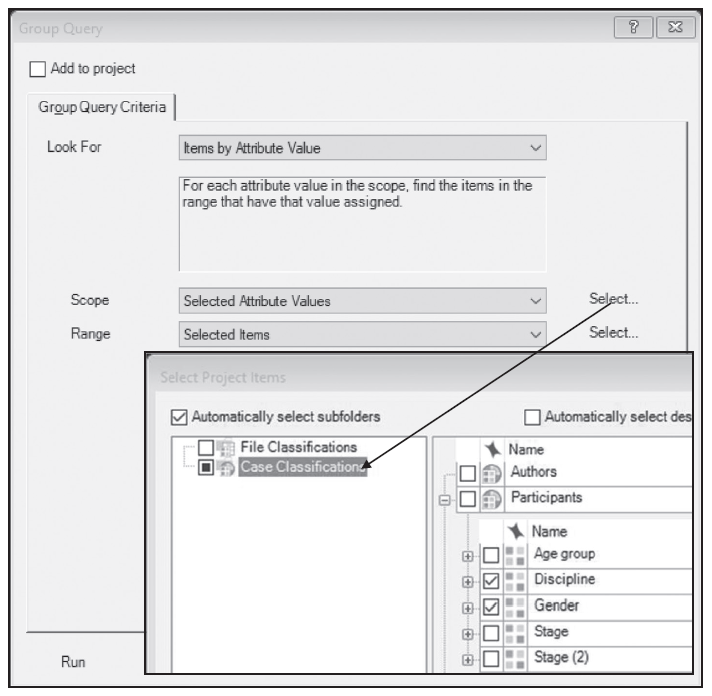
Figure 5.18 Selecting Attribute Values in a Group Query
